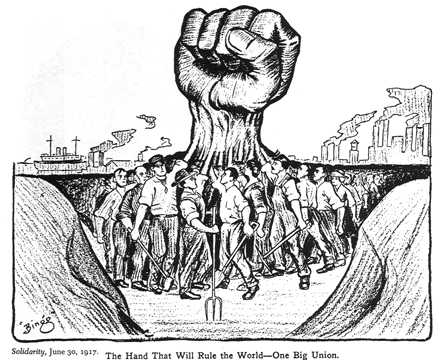mynameislame:
Money is an illusion
No, I think that's not really true. Its a way of expressing a value and probably must exist for us to have a market based economy, otherwise some other means of expressing value would have to be invented. The great era's of historical prosperity have been based on a solid currency that everyone trusted. It was only when a government (think, emperors/kings) started to debase the value of the currency and people stopped trusting the currency, that it became an illusion. When a government starts up the currency printers - that's the time to imagine your money may soon become an illusion.
What does all that money get you? When the wealthy have all the money what are they going to do with it? At some point it becomes worthless.
Smile! Thats the message imprinted in our mind by the Bible. But Yahweh still wanted his temple taxes and Christian churches their contributions, and enough is never enough, even though Ecclesiastes 5:10 (NIV) tells us that:
10 Whoever loves money never has money enough; whoever loves wealth is never satisfied with his income. This too is meaningless.
Curiously, the people who wrote that (the Jews) became an ethnic nation of traders. Of the descendents of the Jews taken into Babylonian captivity, the majority did not return to re-build Jerusalem. They stayed in Babylon and ironically (in view of Eccl. 5:10) became wealthy traders in the huge Asian market.
The blue lines on this map are claimed trading routes of the Radhanite Jewish merchants around 870 CE.
http://en.wikipedia.org/wiki/File:Radhanites2.png
The activities of these Jewish traders were detailed by ibn Khordadbeh, the Director of Posts and Police (spymaster and postman) for the province of Jibal under the (Muslim) Abbasid Caliph al-Mu'tamid (ruled 869–885), when he wrote Kitab al-Masalik wal-Mamalik (Book of Roads and Kingdoms), probably around 870.
Reference: http://en.wikipedia.org/wiki/Radhanite
Text of Ibn Khordadbeh's account
- These merchants speak Arabic, Persian, Roman, [5] the Frank, [6] Spanish, and Slav languages. They journey from West to East, from East to West, partly on land, partly by sea. They transport from the West eunuchs, female slaves, boys, brocade, castor, marten and other furs, and swords. They take ship from Firanja(France [7] ), on the Western Sea, and make for Farama (Pelusium). There they load their goods on camel-back and go by land to al-Kolzum (Suez), a distance of twenty-five farsakhs. They embark in the East Sea and sail from al-Kolzum to al-Jar and al-Jeddah, then they go to Sind, India, and China. On their return from China they carry back musk, aloes, camphor, cinnamon, and other products of the Eastern countries to al-Kolzum and bring them back to Farama, where they again embark on the Western Sea. Some make sail for Constantinople to sell their goods to the Romans; others go to the palace of the King of the Franks to place their goods. Sometimes these Jew merchants, when embarking from the land of the Franks, on the Western Sea, make for Antioch (at the head of the Orontes River); thence by land to al-Jabia (al-Hanaya on the bank of the Euphrates), where they arrive after three days’ march. There they embark on the Euphrates and reachBaghdad, whence they sail down the Tigris, to al-Obolla. From al-Obolla they sail for Oman, Sindh, Hind, and China.
- These different journeys can also be made by land. The merchants that start from Spain or France go to Sus al-Aksa (in Morocco) and then to Tangier, whence they walk to Kairouan and the capital of Egypt. Thence they go to ar-Ramla, visit Damascus, al-Kufa, Baghdad, and al-Basra, cross Ahvaz, Fars, Kerman, Sind, Hind, and arrive in China.
- Sometimes, also, they take the route behind Rome and, passing through the country of the Slavs, arrive at Khamlidj, the capital of the Khazars. They embark on theJorjan Sea, arrive at Balkh, betake themselves from there across the Oxus, and continue their journey toward Yurt, Toghuzghuz, and from there to China. [8]
As you see - a very complex web of markets in which they (and others) bought and sold a variety of products of things, including boys and girls (likely for sex) and eunuchs (likely castrated in their own facilities), to be servants.







